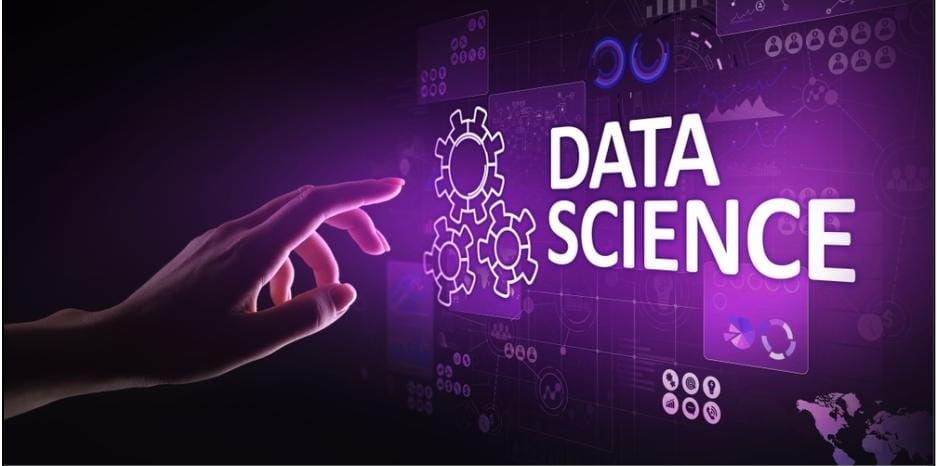Unlocking The Path To Becoming A Data Scientist: Your Comprehensive Guide

Introduction
Data Science is a multidisciplinary field that involves the extraction of valuable insights, knowledge, and actionable information from large and complex datasets. It combines various techniques, tools, algorithms, and methodologies from statistics, mathematics, computer science, domain expertise, and more to analyse and interpret data.At its core, data science aims to understand, visualise, and make predictions or decisions based on data.
Data science is applied across various industries, including business, healthcare, finance, marketing, and social sciences. Its ability to extract meaningful insights from data has led to data-driven decision-making becoming a cornerstone of modern organisations and research.
Are you intrigued by the world of data, drawn to its insights and potential, and eager to contribute to transformative decision-making? If so, a career as a data scientist might be your calling. In today’s data-driven landscape, data scientists are crucial in extracting valuable information from massive datasets and driving impactful business outcomes. In this guest blog, in collaboration with Data Science Training in Chennai we’ll walk you through the journey of becoming a data scientist and offer essential insights to set you on the right path.
In the United States, a statistical consultant has an average yearly pay of $100,925. Reporting of 5 wages, current as of August 15, 2023[1]
Here are some key components and processes within data science:
- Data Collection: Data scientists gather raw data from various sources, including structured data from databases, unstructured data from texts or images, and even sensors and IoT devices.
- Data Cleaning and Preprocessing: Raw data is often messy and may contain errors, missing values, or inconsistencies. Data scientists clean and preprocess the data to ensure its quality and suitability for analysis.
- Exploratory Data Analysis (EDA): This step involves understanding the characteristics of the data through statistical and visual techniques. EDA helps identify patterns, trends, outliers, and potential relationships within the data.
- Feature Engineering: Data scientists transform the raw data into meaningful features that machine learning algorithms can use. This process involves selecting, combining, and creating new variables to improve model performance.
- Machine Learning: This is a crucial aspect of data science. Machine learning involves training algorithms on historical data to make predictions, classify information, or uncover patterns in new, unseen data.
- Model Evaluation and Selection: Data scientists assess the performance of various machine learning models using metrics and techniques suited to the problem at hand. The goal is to choose the best model that generalizes well to new data.
- Model Deployment: Once a model is trained and validated, it can be deployed to predict new data in real-world scenarios. Deployment can involve integrating the model into software applications or systems.
- Data Visualization: Visualizations like graphs, charts, and interactive dashboards help communicate insights effectively to stakeholders. Visualization plays a crucial role in conveying complex information in a digestible form.
- Predictive Analytics: Data scientists use historical data to create predictive models that forecast future trends or outcomes. It is commonly applied in sales forecasting, stock market analysis, and healthcare predictions.
- Big Data and Cloud Computing: With the rise of large-scale datasets, scientists often work with big data technologies and cloud computing platforms to handle and process massive amounts of data efficiently.
- Natural Language Processing and Computer Vision: These subfields of data science focus on analyzing and understanding human language and visual information, respectively. NLP is used in sentiment analysis, chatbots, and language translation, while computer vision is applied in image and video analysis.
- AI Ethics and Data Privacy: As data science advances, ethical considerations around data privacy, bias mitigation, and transparency have become increasingly important in ensuring responsible data usage.
Establishing The Foundation
A strong educational background is essential. Most data scientists hold a bachelor’s or master’s degree in a field such as computer science, statistics, mathematics, or a related domain. These programs provide the foundation for programming, statistics, and data analysis. While formal education is valuable, the rapidly evolving field of data science also welcomes self-taught individuals who demonstrate the right skills.
Developing Core Skills
Data science requires a blend of technical and soft skills. Here’s a breakdown of some core competencies:
- Programming Languages: Master languages like Python or R, which are commonly used for data analysis, machine learning, and visualisation. These languages empower you to manipulate data, create models, and communicate your findings effectively.
- Statistical Analysis: Understand statistical concepts to draw meaningful insights from data and validate hypotheses. A solid grasp of statistics lets you interpret results accurately and make informed decisions.
- Machine Learning: Familiarise yourself with various machine learning algorithms and techniques for predictive modelling. From decision trees to neural networks, these tools empower you to build models that learn from data patterns and make predictions.
- Data Manipulation: Learn how to preprocess, clean, and transform data into usable formats. Data rarely comes in perfect shape, so being adept at data wrangling is crucial to ensure accurate analysis.
- Data Visualization: Skillfully present insights using Matplotlib, Seaborn, or Tableau tools. Visualisations enhance the accessibility of your findings, making complex information understandable to a wider audience.
- Domain Knowledge: Gain expertise in the industry or field you’re interested in to ensure context-rich analysis. A deep domain understanding helps you frame relevant questions and interpret data meaningfully.
Building A Strong Portfolio
Practical experience is invaluable. Engage in personal projects, tackle real-time datasets, and showcase your abilities through a portfolio. It demonstrates your skills, passion, and dedication to potential employers. Choose tasks that align with your interests and allow you to showcase various skills such as data cleaning, feature engineering, model building, and visualisation.
Continuous Learning And Networking
The data science landscape is dynamic, with new tools and techniques emerging regularly. Keep learning through online courses, workshops, and conferences. Additionally, networking within the data science community can open doors to mentorship, collaboration, and job opportunities. Engage in online forums, attend meetups, and connect with professionals in the field.
Gaining Practical Experience
Internships, co-op programs, or entry-level roles like data analyst provide hands-on experience. These roles allow you to apply theoretical knowledge to real-world challenges and learn from experienced professionals. Practical experience not only enhances your skills but also provides a glimpse into the day-to-day responsibilities of a data scientist.offers comprehensive training programs that bridge the gap between theoretical knowledge and practical application.
Tailoring Your Resume And Interviewing
Craft a tailored resume that highlights relevant skills, projects, and experiences. During interviews, demonstrate your problem-solving abilities and approach to tackling data-driven challenges. Be prepared to discuss your portfolio and explain your methodologies clearly. Showcase your ability to work in teams, communicate complex concepts, and adapt to evolving projects.
Landing Your Dream Role
As you gain experience, apply for data scientist positions that align with your skills and interests. Emphasise how your unique background and approach can contribute to the organisation’s goals. Tailor your application to each company’s specific needs, highlighting relevant skills and projects demonstrating your fit for the role.
Conclusion
Becoming a data scientist is a journey that requires dedication, continuous learning, and a passion for uncovering insights hidden within data. Remember, each step you take, whether formal education, skill development, or practical experience, contributes to your growth in this exciting field. Embrace challenges, stay curious, and be at the forefront of innovation, driving transformative change through data-driven decision-making. Your path to becoming a data scientist starts here – embark on this rewarding journey today!
Reference

The Financial Side of Moving: Budgeting and Saving Tips

Making Memories: International Rakhi Celebrations and Traditions

What Makes the #1 Ranked Email Data Service Essential for Your Business?

Pre-Requisites Before Applying for an Instant Personal Loan

Embrace the Magic of Turkey: An Unforgettable Visit

How to Summarize a Report Accurately in Seconds

Project Management and Accounting in Dynamics 365

2024 "Go Green With Taiwan" Kicks Off: Calling for Proposals Worldwide, Taiwan Joins Forces with the International Community to Create a Sustainable Future








